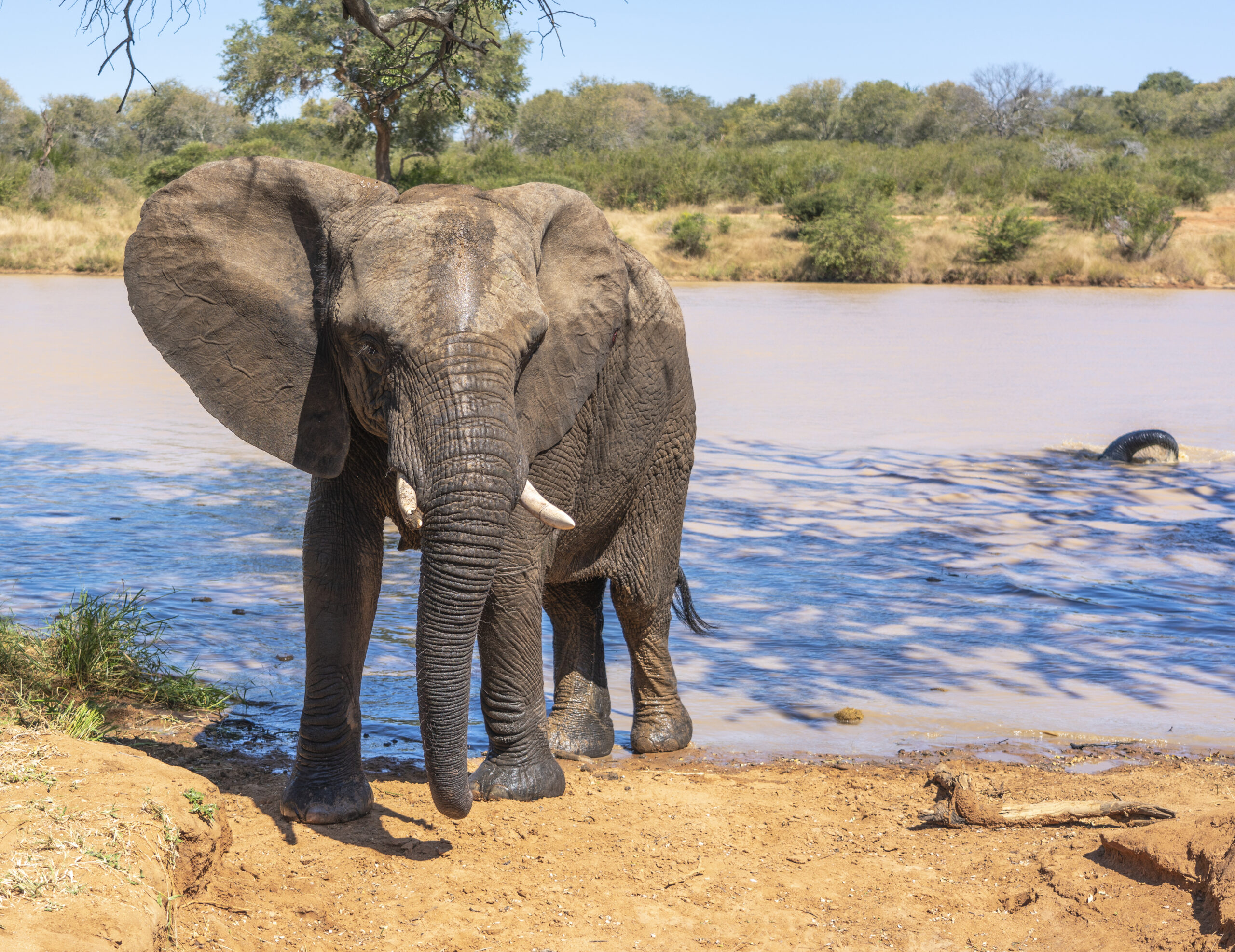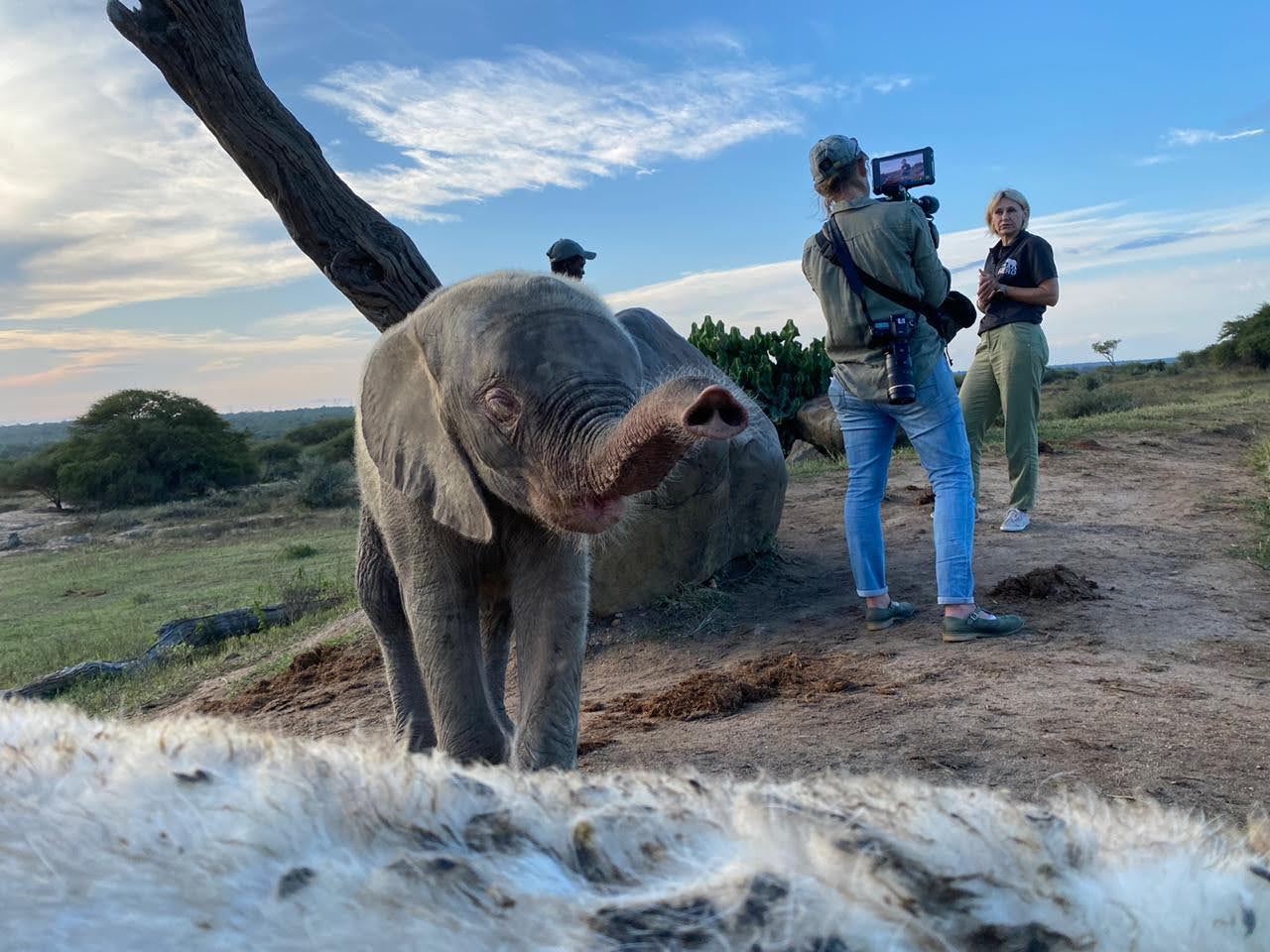When baby elephants are born, they need to get up onto all four feet as quickly as possible so to have that first drink of Mom’s milk, and avoid tempting predators with the smell of new placenta.
The longer they take to stand upright and keep those shaky little waif limbs firm on their new planet, the scarier it gets for mother and child. Baby needs its milk and will stay beside Mom for years, drinking milk from her teat for somewhere between four to five years old. Sometimes even longer, sometimes a little less.
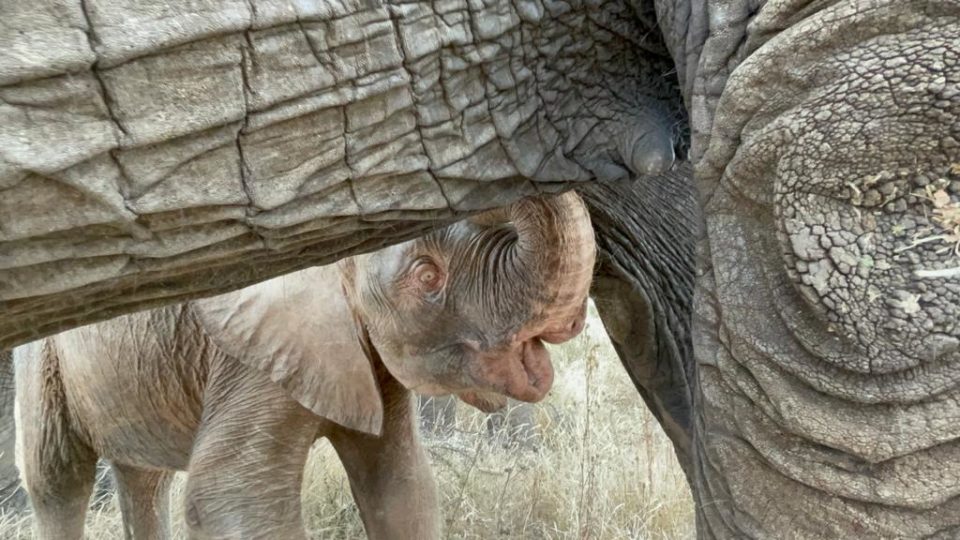
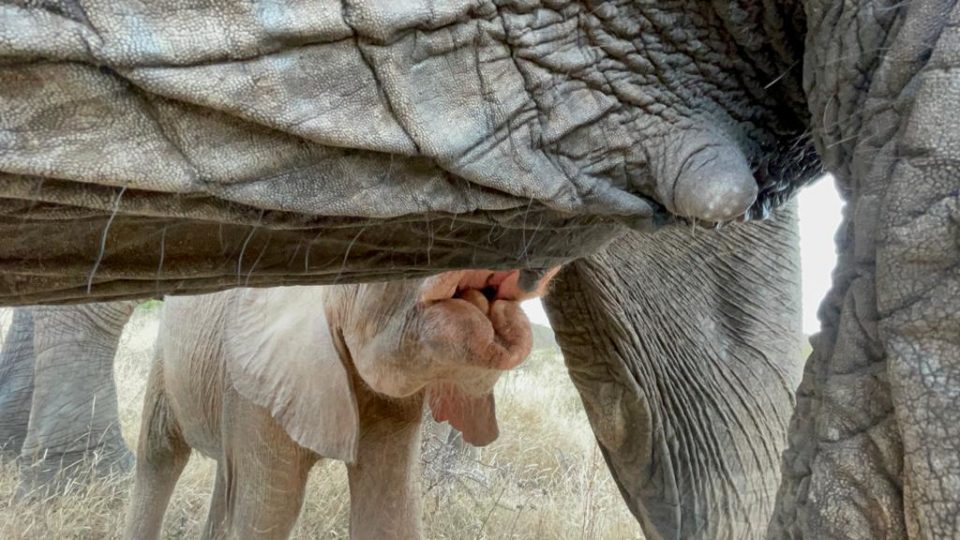
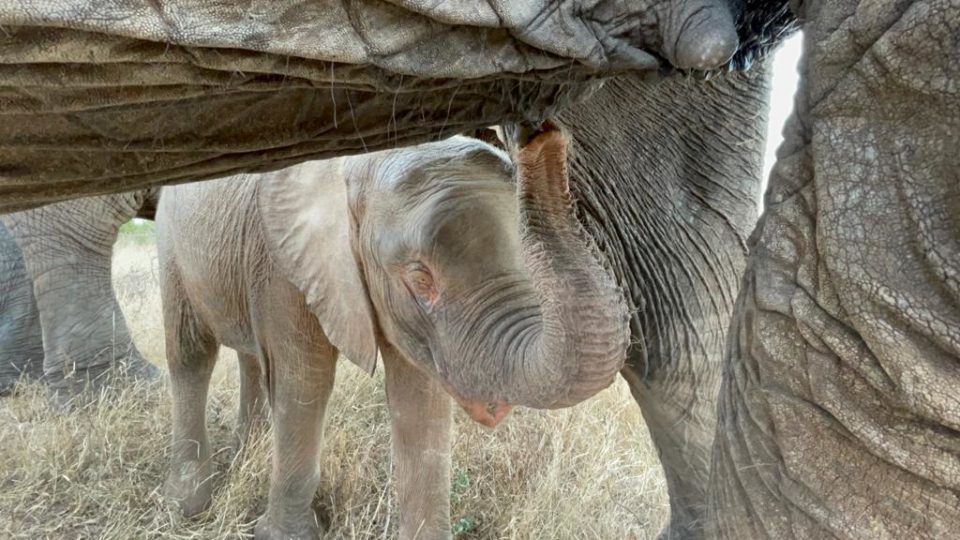
The mother elephant will do everything she can to help her calf suckle from her, moving her front leg forward to make her teat easily accessible to the baby who wraps its little mouth around the teat and draws out the essential liquid.
This is mimicked with orphan calves as they suckle from the milk bottles given to them around the clock, each day, by their dedicated carers. Just as the calf would touch its mother’s underside or body with its enquiring trunk, communicating through touch, and no doubt receiving comfort from the closeness and intimacy, so too will a calf, especially younger ones, touch their carer’s mouth or face while drinking from the bottle.
It’s very difficult to escape the persistent snaking trunk of a suckling calf. Sometimes a carer will blow into the calf’s trunk and you can feel the heat from the long probiscis emanating off it. These moments are incredibly tender and often Baby will close its eyes while drinking, completely in the moment of love, nourishment and support between it and its mother, whether human or elephant.
In addition to receiving Mom’s milk, the new calf receives colostrum – that special ingredient produced in the breast fluid of an elephant mother before she releases breast milk. It contains high levels of antibodies, immune cells and growth hormones and is extremely nutritious and essential in allowing a newborn to get off to a good start.
It’s likely that Khanyisa received her dose of colostrum before being caught in the snare and separated from her mother at four months old. Not all elephant orphans, if abandoned early in their lives, are that lucky.
To keep the orphans healing well, growing strong and roaming energetically, we need to provide them with the energy to do so.
When they first arrive at HERD, milk is an essential form of sustenance, giving the calf what their mother is not around to provide. But the act of feeding the baby is also an intense bonding experience for the very sensitive and often traumatised young animals.
What is it like to feed a baby elephant a milk bottle, besides ticklish? For one, incredibly rewarding, but also challenging, serious, humorous and endearing and expensive. Just like breastfeeding or giving a human baby formula, the process isn’t just a nice-to-do, it’s vital for the survival of your newborn.
If Baby is feeling a little under the weather or temperamental, and doesn’t take the bottle, it isn’t as simple a situation as a human adult missing lunch… Babies of all species need extra energy and nutrition to develop those longer legs and bigger brains that will see them through life in their respective wildernesses.
A baby elephant’s milk formulation is exceptionally delicate and needs frequent adjustment, with extra nutritional supplements as they grow, as their mother’s milk would change naturally through the weaning stages and evolving needs. This is a difficult case of trial and error as an error can lead to serious consequences, and since each elephant is different, especially orphans and trauma victims, there is no “one size fits all” model.
What works for one elephant at a certain age doesn’t necessarily work for another.
The gut of a baby elephant is also extremely sensitive. When an orphan has diarrhea, it has a ripple effect. It starts by impacting their gut lining, which in turn changes their energy levels and affects their emotional wellbeing. They can move from hero to zero in a short period. Daily records of their feeding and bathroom habits are essential to monitor whether they are excreting or urinating more than what they take in. Like human babies, they are very fragile and can quickly dehydrate.
We consult with our experts and friends in rehabilitation often regarding the orphans’ milk formula and their ever-changing needs. Sometimes the damage to the calf, in the case of Fenya, cannot be rectified by milk, no matter how many extra nutrients are added to the mixture.
Each day, several times a day, our carers take to the orphanage kitchen to mix up Khanyisa’s milk bottles, adding the oil and protein she needs to the blend. As the seasons change, and the bush becomes drier now as we enter winter in the reserve, we have increased her milk amounts to supplement the decrease in vegetation she is able to graze on.
The females of the Jabulani herd are not lactating – they are on contraception, since it is not part of our objectives to reed with the rescued herd until they are able to be released into a large and safe enough reserve without a tourism or human presence. They are so used to people and pose a risk to human-elephant conflict and greater chances of poaching due to familiarity. Finding and affording such land in South Africa, where overpopulation, poaching and habitat loss and destruction is prevalent, is incredibly difficult.
Even though the Jabulani females are not producing milk, many of them welcome and encourage Khanyisa to suckle from them – sucking on their teats is such a natural impulse for the calf and for her adoptive mothers and allomothers. Lundi, Bubi and Tokwe were all greatly efficient at this, but sweet Limpopo struggled and still has some things to learn about motherhood.
Khanyisa stopped suckling from the females for several months, but has started to do so again recently now that the bush has started to dry and change again… As a result we increased her milk intake – slowly, so not to bring on diarrhea.
As she approaches two years of age (in September 2021), Khanyisa no longer receives what we politely christened as “Shit Shakes”, dung mixed with milk, oil and water, as she is developing her own digestive bacteria. But for the first year of her life, she received this essential addition frequently while she started to eat more solids.
The purpose of dung in the diet of young elephants (known as “coprophagia”) is to provide essential bacteria that assists the calf in digesting the vegetation that they eat – bacteria that they are not able to produce when they are so young. The bacteria helps to break down plant matter in their intestines and helps to boost not only digestion but also the immune system.
In this case, the Jabulani herd was able to help! The feces of the older members of the herd were delivered to a growing Khanyisa – fresh, raw and ready, either in a shake or as a ball to nibble on.
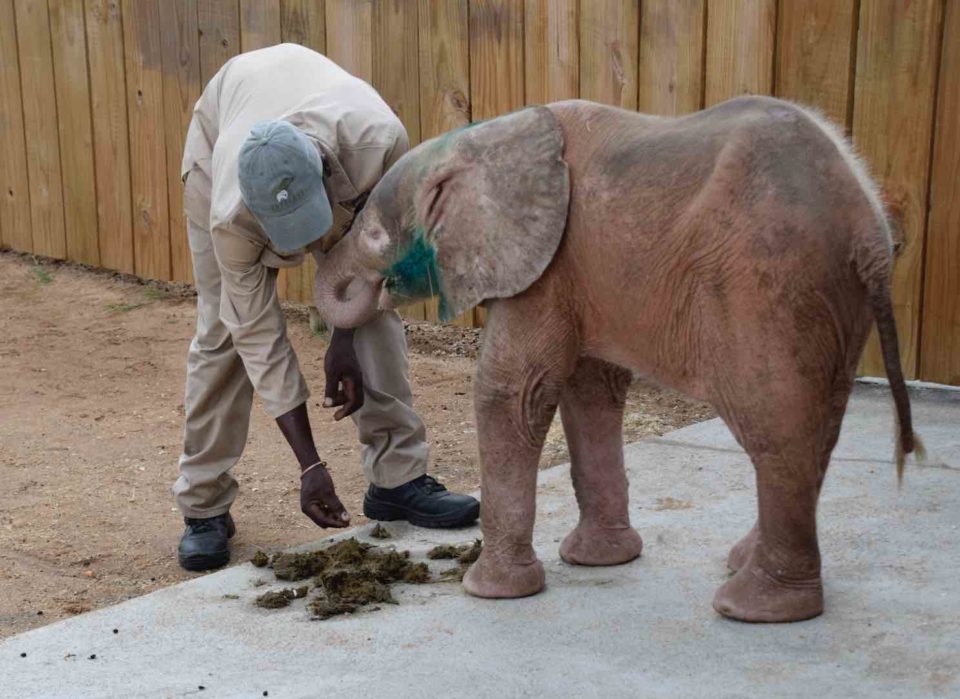
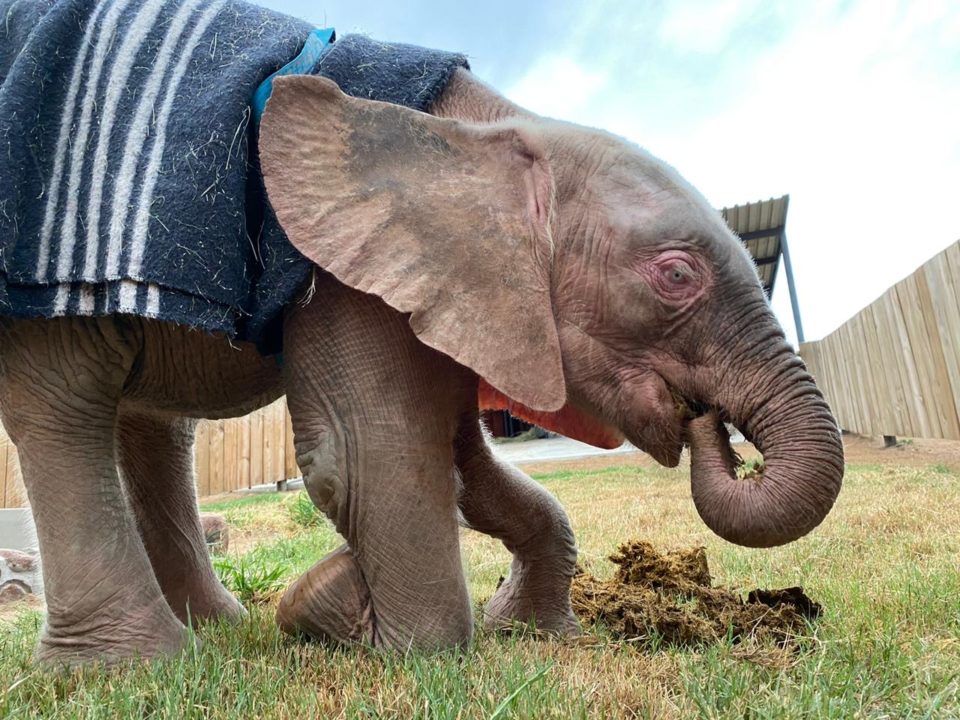
Life After Milk
At HERD, we wean orphan calves after four to five years and recently did so with an orphan elephant, Timisa who had been receiving milk in a bucket with pellets until recently. This was supplemented by bana grass, branches, lucerne, marulas when in season and vegetables, which the older elephants in the rescued herd receive too.
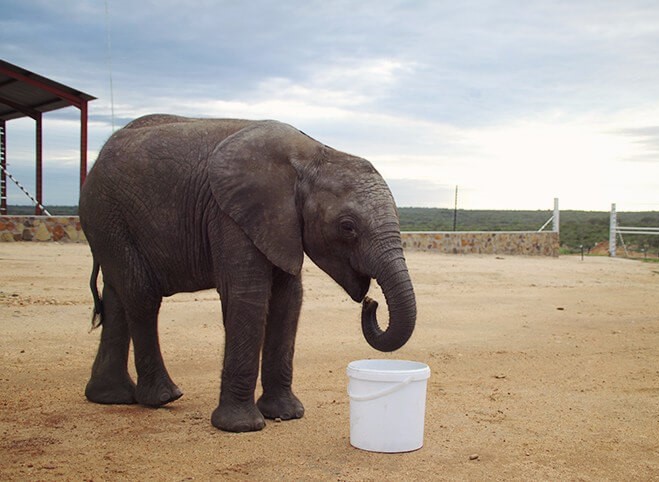
Timisa the Courageous
When Timisa arrived in 2016 after being rescued, she was fortunately already feeding herself on solids, was a keen eater and drank sufficient water. After her rehabilitation, we introduced her to the Jabulani herd and she instantly tried feeding from both Tokwe and Lundi a few times (although both of the female’s babies were older, we thought they may well still have a bit of milk left in them). We closely monitored Timisa, as elephant calves are prone to glycaemia, but she continued to thrive with her new herd.
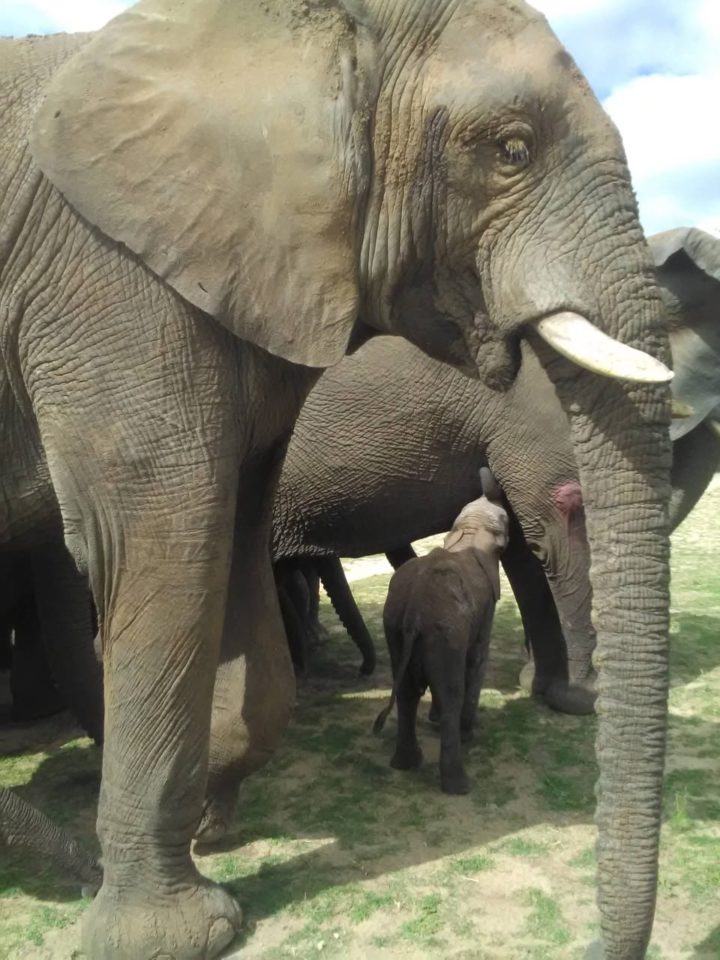

Kind Kumbura
Getting Kumbura to eat after her rescue and during her rehabilitation was not easy. She didn’t like the milk formula, and none of the females in the Jabulani herd were willing to feed her. We truly were not sure whether she would survive. Every day was of the utmost importance in getting her to drink, getting her to feel calm and safe, getting her strong and healthy again.
Winning over her trust was vital to her recovery. Her human carers remained patient, hopeful, and continued to give her all the care and love that she needed. We fed her any nutritious foods that she would eat – which included her favourites, apples and vegetables.
We believe a key reason that Kumbura pulled through was due to the comfort she received from the elephants in the herd – especially Lundi and Tokwe, who adopted her as their own, and her gentle guardian, Sebakwe.
Milk remains a constant and vital part of life for Khanyisa now.
Heading out into the bush to give her milk bottles several times a day is a continual part of parenthood for our carers. Khanyisa certainly has her favourites when it comes to receiving milk bottles and won’t just take from anyone – she needs to know, trust and love her provider. Milk really is something so essential in our daily lives and the journey of orphan calves. It is a job, a connection, and life.
The funds raised through our valued fosters and donors go towards the provision of the orphans’ essential milk bottles.
We are so grateful for the support from people around the world who enable us to provide orphans like Khanyisa with the nutrition and care they need to keep growing into strong, healthy elephants, with an adoptive herd of their own.



 Comment
Comment



